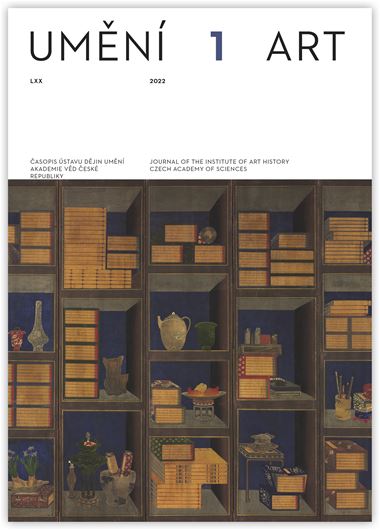Kamil Boldan
The Krumlov Master of Two Styles: On the Beginnings
of Renaissance Bookbinding in Bohemia
This essay is a reaction sixty years on to the study by Bohumil Nuska entitled ‘The Beginnings of Czech Renaissance Bookbinding’ (Umění X, 1962). Nuska showed how the defining location for the migration of Renaissance style to the Czech lands was Krakow, whence several trained bookbinders travelled to Prague around 1520. More recently, Petr Voit examined a group of early Renaissance bindings and concluded that they were the work of the sole workshop of the ‘Czech Rights’ Master Bookbinder, which employed several craftsmen. This workshop had been producing bookbinding from the latter half of the 1510s, the decoration of which, with its dominant composition and detailed work with a blank space, was diametrically different to the production of other Czech workshops, which typically featured a frame composition and a stamp pattern filling the entire central field. Nuska’s claim regarding the Polish contribution to the formation of early Renaissance bookbinding in the Czech lands remains valid. However, in this study I set out to counter the claim that its appearance was sudden and without precedent. The hitherto overlooked workshop of the Master of Two Styles had adopted the Renaissance style more than a decade earlier, and fashion designs featuring predominantly circular elements had allowed it to create the bindings of advanced Viennese workshops according to a related stamping apparatus. On the basis of 21 recorded stamps, I have identified a total of 35 bookbindings made by the Master of Two Styles between 1494 and 1520 (appendices A, B). An analysis of the indications of provenance of these manuscripts and prints clearly shows that they were created in Český Krumlov. To begin with the Master created the decoration using the customary frame concept. However, by the end of the first decade of the 16th century at the latest, he was placing circular features in the middle of the central fields and quarterly sectors in the corners comprising one or more concentric circles. The internal circumference was most often bordered with prints of the characteristic headed stamp.
Author's email:
Kamil.Boldan@nkp.cz
DOI: HTTPS://DOI.ORG/10.54759/ART-2022-0104
Full-text in the Digital Library of the Czech Academy of Sciences:
https://kramerius.lib.cas.cz/uuid/uuid:db54b722-b045-43c9-aaea-b8990dec976c
< back

